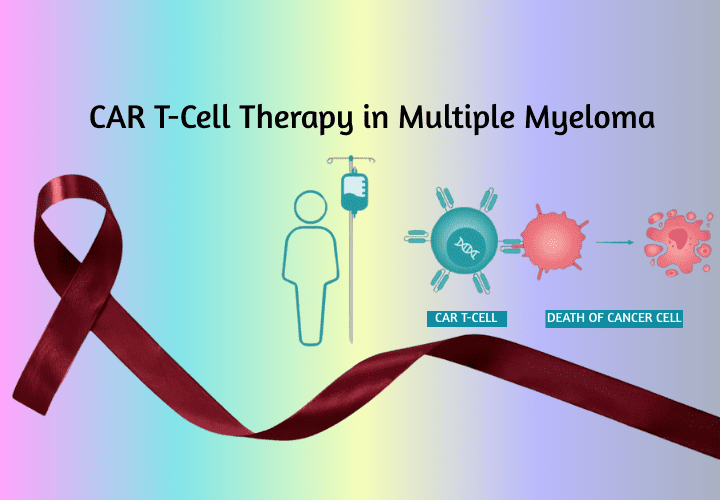Pediatric Sarcoma and Bone Cancer: Unique Challenges and Treatment Approaches

Pediatric Sarcoma and Bone Cancer: Unique Challenges and Treatment Approaches
- onco
- January 4, 2024
When it comes to juvenile cancers, pediatric sarcoma and bone cancer present particular difficulties. Because of their unique qualities and the delicate nature of treating young patients, many rare but dangerous diseases require specialist attention. Here, we will examine the subtleties of treating bone cancer, delve into the complexities of pediatric sarcoma cancer, and illuminate the always-changing strategies medical professionals use to take on these tough foes in this blog post.
Recognizing Pediatric Sarcoma:
Children and adolescents may develop pediatric sarcoma, a rare type of cancer, in their soft tissues or bones. This cancer includes a wide range of tumor types, each with unique difficulties. The difficulty of making an early diagnosis, which frequently results in a delayed start of treatment, is one of the main challenges in treating pediatric sarcoma. This diagnostic problem is exacerbated by the rarity of these tumors and the variety of symptoms, underscoring the need for increased awareness among parents and healthcare practitioners.
Significance of Early Identification:
The fight against pediatric sarcoma continues to be based on early identification. Parents and caregivers are essential when it comes to seeing possible warning signals like chronic discomfort, swelling, or unexplained tumors. Early intervention can have a major impact on the prognosis, highlighting the significance of routine pediatric examinations and keeping lines of communication open with medical providers.
Pediatric Patients with Bone Cancer:
As a subtype of pediatric sarcoma, bone cancer has its own special difficulties. The two most prevalent forms of bone cancer in children that affect long bones, such as the arms and legs, are osteosarcoma and Ewing sarcoma. Because of their aggressive nature, treatment for these malignancies must be interdisciplinary, involving radiation oncologists, pediatric oncologists, and orthopedic surgeons.
Therapy Strategies for Bone Cancer and Pediatric Sarcoma:
As medical science and technology develop, do the therapy options for bone cancer and pediatric sarcoma. The foundation for treating these tumors continues to be traditional methods such as radiation therapy, chemotherapy, and surgery. Nonetheless, newer forms of treatment, such as immunotherapy and targeted medicines, present encouraging paths toward more focused and successful interventions.
- Surgical Intervention: When it comes to treating pediatric sarcoma and bone cancer, surgery is essential. The intention is to remove the tumor as much as possible while leaving as much healthy tissue intact. Modern surgical methods, such as limb-sparing surgery, try to keep young patients functioning and enjoying their lives as much as possible, lessening the negative effects of treatment on their long-term health.
- Chemotherapy: Chemotherapy is still a standard treatment for bone cancer and pediatric sarcoma. Chemotherapy regimens that are specifically tailored aim to target cancer cells with the least amount of damage to healthy tissues. The difficulty is in striking a balance between the strong anti-cancer effects and any possible adverse consequences, particularly in children’s developing bodies.
Read More Blog: What Are The Things You Should Know Before Starting Chemotherapy?
- Radiation Therapy: High-energy rays are used in radiation therapy to target and kill cancer cells. It is critical to apply radiation with precision, especially in pediatric instances where it is essential to minimize damage to adjacent healthy tissues. Proton therapy is one example of an advanced technology that offers greater precision and less long-term treatment impact on growing tissues.
- Targeted Therapies: Targeted therapies interfere with the growth signals of cancer cells by focusing on particular molecular defects within the cells. Targeted medicines have promise in treating specific genetic abnormalities that propel tumor growth in the context of pediatric sarcoma. These treatments are still in the early phases of investigation, which emphasizes the continuous need for study and clinical trials.
- Immunotherapy: Immunotherapy stimulates the immune system of the body to identify and combat cancerous cells. Although it has demonstrated impressive results in treating certain adult cancers, research is currently being done on its use in treating pediatric sarcoma and bone cancer. The prospects for the future are bright when the potential of immunotherapy for treating childhood cancer is realized.
Read More Blog: How Does Immunotherapy Help In The Fight Against Cancer?
Value of Supportive Care:
In addition to providing medical care, children patients with sarcoma and bone cancer require holistic care that attends to their emotional and psychological needs. Supportive care services are essential in assisting children and their families in overcoming the obstacles related to cancer treatment. These services include counseling, palliative care, and survivorship programs.
In summary, treatment for bone cancer and pediatric sarcoma must be thorough and dynamic due to their unique problems. For young patients facing these powerful opponents, the environment is becoming increasingly promising thanks to early detection, advancements in surgical procedures, targeted medicines, and immunotherapy. In order to give children and adolescents affected by pediatric sarcoma and bone cancer hope and improve their prognosis, healthcare professionals, researchers, and support networks must work together while research into these complicated diseases continues. For the best bone cancer treatment, you should choose Oncoplus and experience world-class care that is tailored to your specific needs. At Oncoplus, we’re dedicated to giving patients with bone cancer the finest care possible. We have a team of highly skilled oncologists and state-of-the-art facilities.
Recent Posts
-
Can Testicular Cancer affect fertility?
April 23, 2025
-
Why are Breast Cancer Cases Increasing Around the World?
April 17, 2025





Leave a Reply